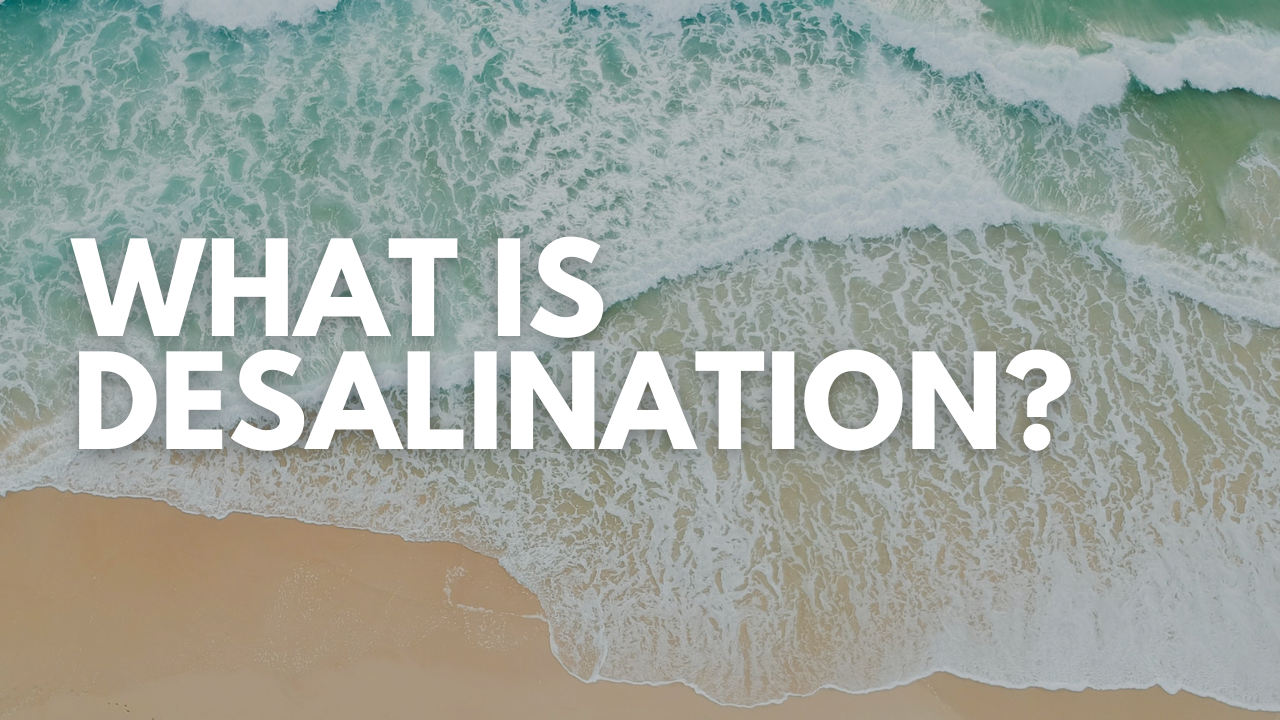What is Desalination?
Desalination uses distillation or reverse osmosis to separate salts and minerals from water.
Seawater is forced through a semipermeable membrane under high pressure. The membrane allows smaller water molecules to pass through, leaving salt and other contaminants behind.
What is the definition of desalination?
According to the oxford dictionary, the definition of desalination is "the process of removing salt from seawater."
What Is The Desalination Process?
There are distinct stages that water goes through during desalination.

Stage 1: Seawater Is Collected
The first step is to collect the seawater at a pace that doesn’t suck up all the fish in that area, so water is only collected at a rate that allows fish to swim against the current to avoid getting sucked into the desalination plant.
Stage 2: Prefilter
Before the water goes through the desalination process, it must be cleaned so that larger particles are no longer in the water. This stage is like a massive sediment filter that removes all forms of biological waste, sand, dirt, microplastics and any other contaminants that the seawater contains.
What’s left is pure seawater that is ready to flow into the membrane to remove the salts and minerals.
Stage 3: Reverse Osmosis
The water is then pushed through a semi-permeable membrane, where only the water can pass through, leaving the smaller salt particles left behind.

Step 4: The Water Is Split
The water is split in half at this stage, where 50% of the water becomes pure, while the other 50% is twice as salty as before and is put through a diffuser and sent back into the ocean again.
Stage 5: Post Treatment
Once the desalinated water has been collected, it needs final polishing before it’s ready to drink.
At this stage, the water is entirely void of all minerals and salt, which means it’s not ready to drink. Without the presence of salts and minerals, water is very acidic.
In the final post-treatment, minerals are added back into the water to raise the pH of the water, and further chemical treatment such as fluoridation and chlorination is performed.
The water is now ready to be consumed and pumped for miles through long pipes where it finally comes out of your faucet.

When Your Water Gets Contaminated Again
After the water has left the treatment plant, it travels for miles down long pipes containing residual bacteria and many other pollutants which are reintroduced into the water.
These pipes could be many years old and significantly deteriorated, so the chance of heavy metal contamination is also relatively high.
After the treatment plant, whatever enters the water is up to you to remove.
Your Last Line Of Defence
Although the water was contaminant-free after the desalination process, it isn’t as pure when it comes out of the tap.
The water at this stage has been contaminated with chlorine, bacteria, metals and anything else lurking in the pipes underground.
Many households worldwide are using water filters to clean up their water before drinking.
A benchtop water filter, under sink water filter, reverse osmosis or benchtop gravity water filter is always a handy addition to your kitchen.
Homeowners are also installing whole house water filters to remove these contaminants from the entire house. This means your appliances last longer, and even the water you shower in is also chlorine-free, so you can have all the benefits that those with a shower water filter also enjoy.
Feel free to check out our filtration systems and let us know if you have any questions.
We’d be happy to help!







